Rolls-Royce intelligent jet engine steals the show at Hannover Messe 2016
It’s a bird . . . It’s a plane . . . No, it’s a really big IoT aircraft engine! Behold the Rolls-Royce Trent XWB-84—and it’s connected to Microsoft Azure.
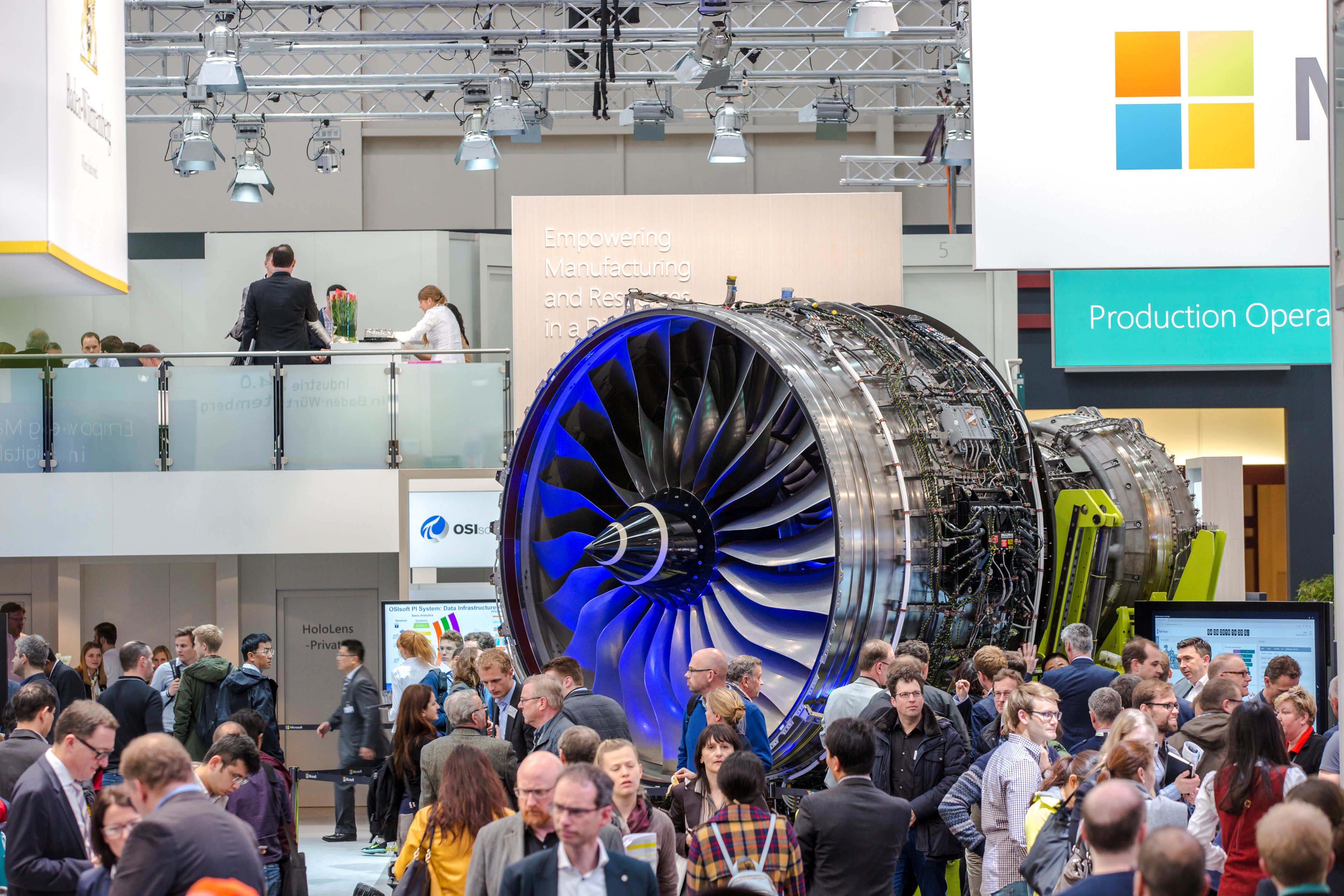
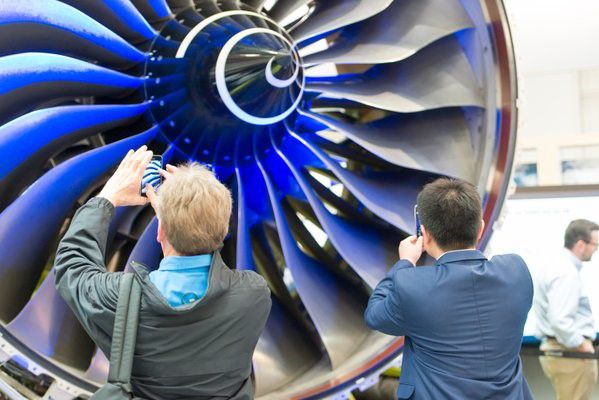
Walking up to the Microsoft booth at Hannover Messe 2016, attendees were quite taken back at first. We had the privilege of hosting the first public display of Rolls-Royce Trent XWB jet engine made exclusively for the Airbus A350 and it made a statement as big as its physical size. For most people it was shocking to see such a large and beautiful machine within arm’s reach and for some, they didn’t quite know what it was. It’s understandable. It’s not every day you see a large turbofan engine not hanging from a wing and housed in a nacelle. For those who did know, there was the mystery of which engine, upon which aircraft it flies and of course, what was it doing in Microsoft’s booth! We had the pleasure of proudly reporting the facts and figures about the engine but importantly, explaining how this engine is connected to Azure. Word of mouth spread quickly, and attendees came from far and wide to get a glimpse. One thing was clear: this exhibit with Rolls-Royce was no ordinary booth showcase.
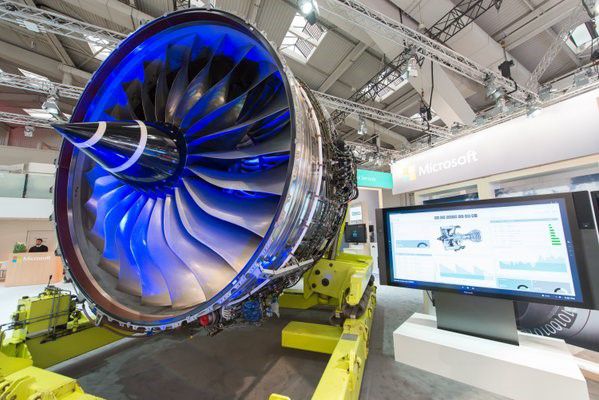
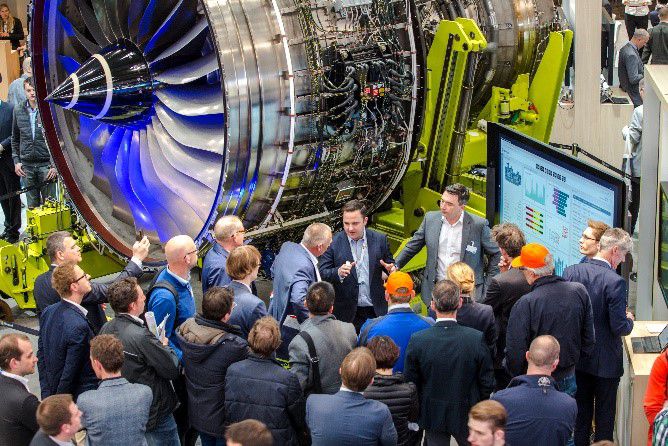
Boasting one of the single biggest—and decidedly the most photographed—displays at the world’s largest industrial fair was no easy feat. Our goal was to demonstrate the convergence of physical and digital worlds, where we use predictive analytics to provide insights into maintenance planning, fuel management, and overall fleet health in order to help airlines potentially save millions of dollars per year.
And during Hannover Messe, people flocked to our booth for five straight days to see it. We enjoyed a steady stream of visitors who stopped by to curiously spend time talking to us about this incredible data platform showcase—and of course take a few selfies for prosperity.
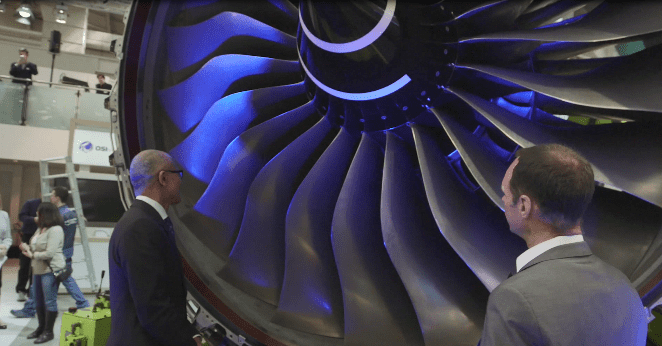 After checking out the engine in person, Microsoft CEO Satya Nadella shared his impressions with leaders during his opening keynote. He remarked that Rolls-Royce is an innovative example of a company that is utilizing the intelligent cloud and systems of intelligence to build better engines and a better customer service model. He pointed out one of the most interesting things about their story is that they are going from essentially being a manufacturer of great, world-class aircraft engines, to building software products that are going to not only drive better performance of their engines, but also drive additional value to their airline customers when it comes to how they operate. This is what Microsoft envisions: being able to create these platforms that can, in turn, create more digital technology from every industrial company.
After checking out the engine in person, Microsoft CEO Satya Nadella shared his impressions with leaders during his opening keynote. He remarked that Rolls-Royce is an innovative example of a company that is utilizing the intelligent cloud and systems of intelligence to build better engines and a better customer service model. He pointed out one of the most interesting things about their story is that they are going from essentially being a manufacturer of great, world-class aircraft engines, to building software products that are going to not only drive better performance of their engines, but also drive additional value to their airline customers when it comes to how they operate. This is what Microsoft envisions: being able to create these platforms that can, in turn, create more digital technology from every industrial company.
Physical to digital
Rolls-Royce’s story is the epitome of the convergence of physical and digital to deliver a highly valued intelligent product or service. In our showcase, we demonstrated a number of data sources, specifically the EMU as previously mentioned, but also the aircraft’s quick access recorder (QAR), airline data such as flight plans and schedules, as well as publicly sourced data such as weather, in particular.
Azure IoT Suite collects and aggregates information from the EMU, Azure Data Management Gateway uploads QAR data to Azure Data Factory and then Cortana Intelligence Suite uncovers data insights. Using Azure Stream Analytics and Microsoft Power BI dashboards, the goal is to uncover data insights that will enable airlines to improve their operational performance, optimize maintenance scheduling and reduce fuel use.
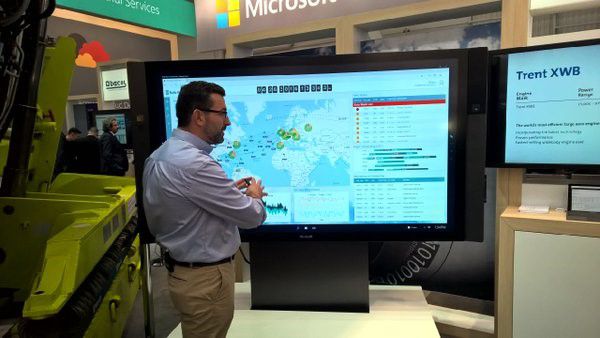
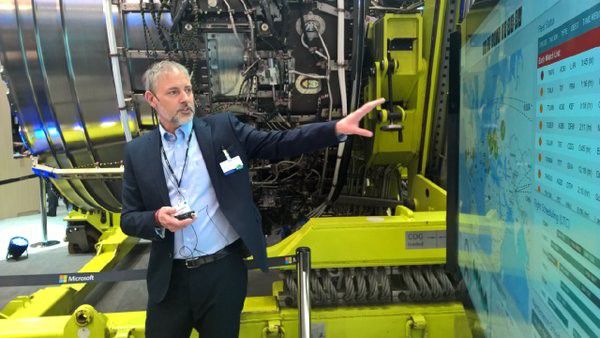
This is a remarkable story for any company to tell, but it is really interesting coming from Rolls-Royce, whose heritage is steeped in aero-engine design and manufacturing—which are some of the most highly technically advanced machines on the planet.
And yet, for progressive companies like Rolls-Royce, the next wave of differentiation is digital. Designers are constantly challenged by physics. Any efficiencies they gain, irrespective of the level of innovation, their competitors will not be far behind. Contrast that with what you can do with digital, where you can be more agile, and apply learning systems to give insights into how to operate an engine, or any other parts of the aircraft, in a more efficient manner or with new levels of performance, agility and speed. And the depth of insight that companies can gain from this kind of information is effectively unparalleled.
Today there is much focus on operational efficiencies as the results are immediate, but in a fast-paced world of constant innovation, the opportunity for designer and engineers is vast. Products can be the source of information that inspires new thinking.
For Rolls-Royce in particular, with systems of intelligence, they can move beyond information from just the engine to all of the aircraft systems, as well as external factors. It’s not just about how the engine operates, but how it operates down to very fine details like the specific aircraft, pilots, flight pattern, flight time, weather, as well as fueling and maintenance locations. The combination of all of this information gives you very personalized, actionable information.
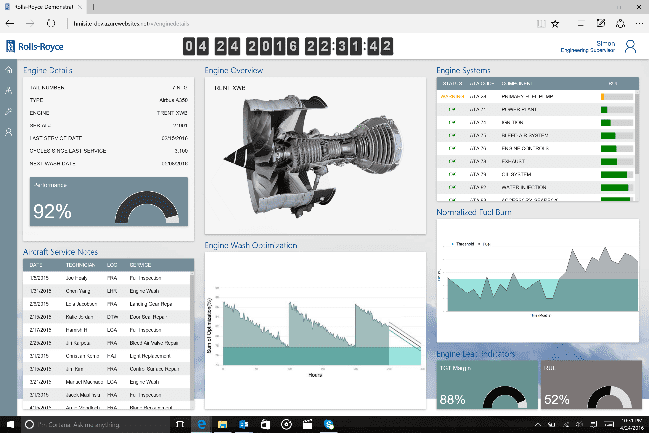
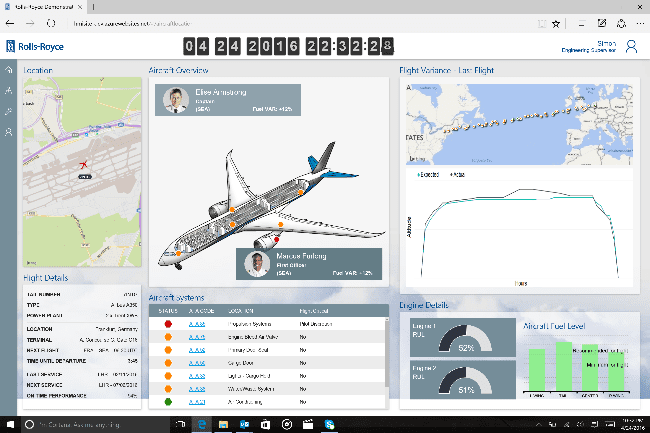 A new level of predictive intelligence
A new level of predictive intelligence
It’s important to point out that this is also more than just monitoring or predicting when an engine might fail. It’s about maximizing efficiency through insights so you can operate at peak performance and utmost safety, as well as ensure the highest level of cost savings in order to maintain the engine in such a way where it never fails. This is a new level of predictive intelligence that couldn’t be realized before due to either lack of access to the right information or tools to process the information effectively. And with this predictive intelligence, Rolls-Royce—with the help of Microsoft technology—is helping airlines to think about every aircraft and every fleet uniquely and then what that means to the overall business.
It is truly an innovative and important approach.
Cross-industry application
There was an interesting level of fascination from people across all different kinds of industries who visited our booth and heard this story. Many walked away with the inspiration to take what we’ve accomplished with Rolls-Royce and apply it to their own commercial products and develop something similar. We found that people were interested in not just predictive maintenance, but also the opportunity to learn about the performance, which can govern what you can do in terms of a product redesign, improvement, or even the development of a completely new product. There is rich opportunity to apply this strategy across many industries and businesses.
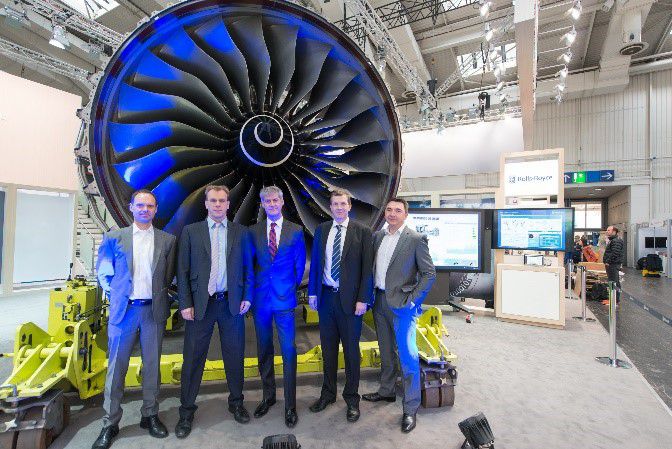
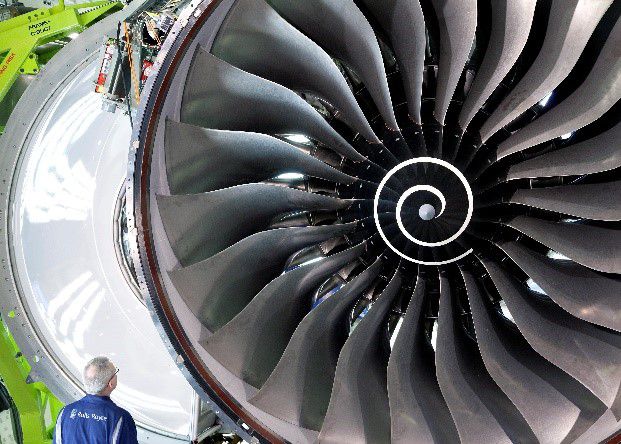 Efficiency to save the planet, connect consumers
Efficiency to save the planet, connect consumers
As Rolls-Royce expands their digital services, the benefits to the industry promise to be significant. But, if you really think about it, this story is much bigger than its impact on the industry. The opportunities on a macro-environmental level have the potential for a big impact for our society and planet—beyond just understanding how to make machines operate more efficiently.
For example, if you take 80 airlines and make all of them more fuel efficient, then essentially the carbon footprint of every flight comes down. You could say that in what seems like a small way, you are helping the environment of the planet, but it actually ends up having a big impact. You are also helping airlines’ ability to help people connect to each across the globe by minimizing delays, whether that’s seeing family and friends or engaging in commerce. You are also allowing airlines to operate more efficiently and cost-effectively, allowing them to pass on the savings to consumers through lower priced airfares, more flight options, and increased on-time arrivals.
As you can see, I’m truly excited by our partnership with Rolls-Royce and the impact we are driving together. Be sure to check out the video!
LinkedIn: Simon Floyd
Twitter: @FloydInnovation




